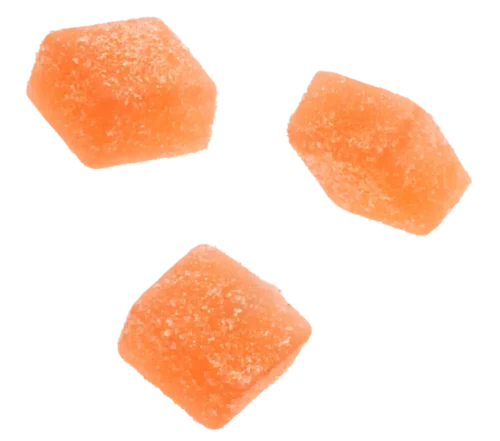Endocannabinoids: Powerful Compounds You Should Learn To Love


Christopher Visser
Multi-Cannabis Business Owner
Christopher Visser, the Founder and CEO of Cannabidiol Life and THCGummies.com, is a distinguished figure in the CBD industry, recognized for his pioneering contributions since 2016. With over 120 published articles, Christopher has become a reputable cannabis researcher, writer, and author. He's built two prosperous cannabis ventures that collectively generated millions in annual sales. His in-depth analysis of numerous cannabis studies, collaboration with medical professionals, and personal engagement with thousands of customers underline his expertise and commitment to advancing cannabis understanding daily.
-
 Written By:
Christopher Visser
Written By:
Christopher Visser
- Published:
- Updated: March 11, 2024
- Too Quiet, Light Up The Convo!
Table of Contents
- Tags: ECS, Endogenous
WHAT ARE ENDOCANNABINOIDS?
Endocannabinoids (eCB’s) are naturally occurring chemical compounds found in the human body and in nearly all animals with a cellular nucleus. They play a crucial role in regulating various physiological processes and maintaining internal balance, or homeostasis.
POP QUIZ!
Which of these are true?
A) Endocannabinoids are made by the human body.B) Endocannabinoids are synthetic molecules.
C) Endocannabinoids are a type of vitamin.
D) Endocannabinoids are only found in the brain.
Correct Answer: A
|Correct! The "Endo" in Endocannabinoid, means 'From With' and endocannabinoids are a part of the masterful Endogenous Cannabis System.
23 Endocannabinoids & Their Descriptions
There have been 23 distinct endocannabinoids, produced by the body, each serve specific roles in orchestrating bodily functions. They interact with receptors and metabolic enzymes within the endocannabinoid system (ECS), a complex cell-signaling system essential for maintaining a stable internal environment within the host spanning several vital body systems.
Classical Endocannabinoids:
| Name | Description |
|---|---|
| Anandamide (AEA) | Also known as the “bliss molecule,” anandamide binds to CB1 and CB2 receptors, influencing pain perception, mood, appetite, and memory. It also regulates sleep, fertility, and neurogenesis. |
| 2-Arachidonoylglycerol (2-AG) | The most abundant endocannabinoid, 2-AG is a full agonist of CB1 and CB2 receptors. It modulates neurotransmitter release, pain sensation, immune function, and has neuroprotective properties. Elevated during exercise. |
Anandamide Analogs:
| Name | Description |
|---|---|
| Virodhamine (OAE) | Acts as a partial agonist at CB1 receptors and an antagonist at CB2 receptors, potentially counterbalancing the effects of anandamide and 2-AG. May play a role in regulating body temperature and inflammation. |
| Di-homo-γ-linolenoyl ethanolamide (DHLEA) | An analog of anandamide detected in various tissues. Specific functions are still under investigation but may interact with the endocannabinoid system to modulate various physiological processes. |
| Docosatetraenoylethanolamide (DEA) | An anandamide analog found in the brain and peripheral tissues. Specific functions are still under investigation but may interact with the endocannabinoid system to modulate various physiological processes. |
| Eicosapentaenoylethanolamide (EPEA) | Derived from the omega-3 fatty acid EPA, EPEA binds to CB1 and CB2 receptors and has potential anti-inflammatory and neuroprotective properties. Its presence in fish oil may contribute to the health benefits of omega-3. |
| Docosahexaenoylethanolamide (DHEA) | Derived from the omega-3 fatty acid DHA and detected in the brain. DHEA may play a role in neuroprotection and the regulation of glucose metabolism. |
| Homo-γ-linolenoyl ethanolamide (HLEA) | An analog of anandamide detected in various tissues. Specific functions are still under investigation but may interact with the endocannabinoid system to modulate various physiological processes. |
| Linoleoylethanolamide (LEA) | Derived from linoleic acid, LEA is detected in the brain, intestine, and adipose tissue. It may play a role in regulating energy metabolism and inflammation. |
Fatty Acid Ethanolamides:
| Name | Description |
|---|---|
| Oleoylethanolamide (OEA) | While not directly interacting with cannabinoid receptors, OEA activates PPAR-α receptors involved in lipid metabolism and energy homeostasis. It suppresses appetite, promotes lipolysis, and improves insulin sensitivity. |
| Palmitoylethanolamide (PEA) | Has potent anti-inflammatory and analgesic properties, mediated through interactions with PPAR-α, TRPV1, and GPR55 receptors. Shows therapeutic potential in conditions such as neuropathic pain, multiple sclerosis, and inflammatory bowel disease. |
| Stearoylethanolamide (SEA) | Although not binding directly to cannabinoid receptors, SEA potentiates anandamide effects by inhibiting its degradation. May also have neuroprotective and anti-inflammatory properties through interaction with other receptors, such as PPAR-α. |
| N-Oleoylethanolamine (OEA) | Similar to anandamide in structure, OEA is an endogenous PPAR-α agonist implicated in appetite regulation and lipid metabolism. |
| N-Palmitoylethanolamine (PEA) | PEA is an anti-inflammatory and analgesic compound that has been shown to potentiate the effects of anandamide. |
| N-Stearoylethanolamine (SEA) | Like OEA and PEA, SEA is a fatty acid ethanolamide found in various tissues that may interact with the endocannabinoid system. |
Other Endocannabinoid-like Compounds:
| Name | Description |
|---|---|
| N-Arachidonoyl dopamine (NADA) | In addition to its analgesic and anti-inflammatory properties, NADA activates the TRPV1 receptor involved in pain signaling and thermoregulation. It also exhibits antioxidant and neuroprotective effects. |
| 2-Arachidonoyl glycerol ether (Noladin ether) | Binds selectively to CB1 receptors and has been detected in various tissues, including the brain, spleen, and kidneys. Its potential functions include neuroprotection and modulation of vascular tone. |
| N-Arachidonoyl glycine (NAGly) | Unlike classical endocannabinoids, NAGly does not bind to CB1 or CB2 receptors but activates GPR18 and TRPV1 receptors. It has anti-inflammatory, analgesic, and vasodilatory effects and may play a role in regulating bone metabolism. |
| Lysophosphatidylinositol (LPI) | Although not a classical endocannabinoid, LPI activates the GPR55 receptor often associated with the endocannabinoid system. It may play a role in regulating energy homeostasis, insulin secretion, and bone remodeling. |
| Arachidonoyl serine (AraS) | Found in the brain and peripheral tissues, AraS interacts with various receptors, including GPR55 and TRPV1, and may have vasodilatory and neuroprotective effects. |
| N-Arachidonoyl-L-serine (ARA-S) | An endocannabinoid-like compound found in the brain and shown to have vasodilatory effects. |
| N-Arachidonoyl GABA (NAGABA) | Identified in bovine brain, NAGABA may interact with the endocannabinoid system, although its specific functions are still under investigation. |
| Oleamide | While not technically an endocannabinoid, oleamide is a sleep-inducing lipid that has been shown to interact with CB1 receptors and enhance the effects of anandamide. |
What Do Endocannabinoids Do In The Body?
When endocannabinoids attach to cannabinoid receptors, they trigger responses that influence functions including mood, pain sensation, appetite, and memory.
The presence and activity of different enzymes and molecules determine the concentration and function of these endocannabinoids. This balance controls a range of biochemical pathways, leading to electrical signaling vital for many of the body’s essential activities.

If this article sparked a new insight, pass the flame…
LET’S IGNITE RIPPLES OF CANNABIS WISDOM.
Be the catalyst for someone’s breakthrough moment.
SHARE ON SOCIAL MEDIA

YOUR CANNABIS EDIBLE
JOURNEY CONTINUES:
Looking For Something Else?



